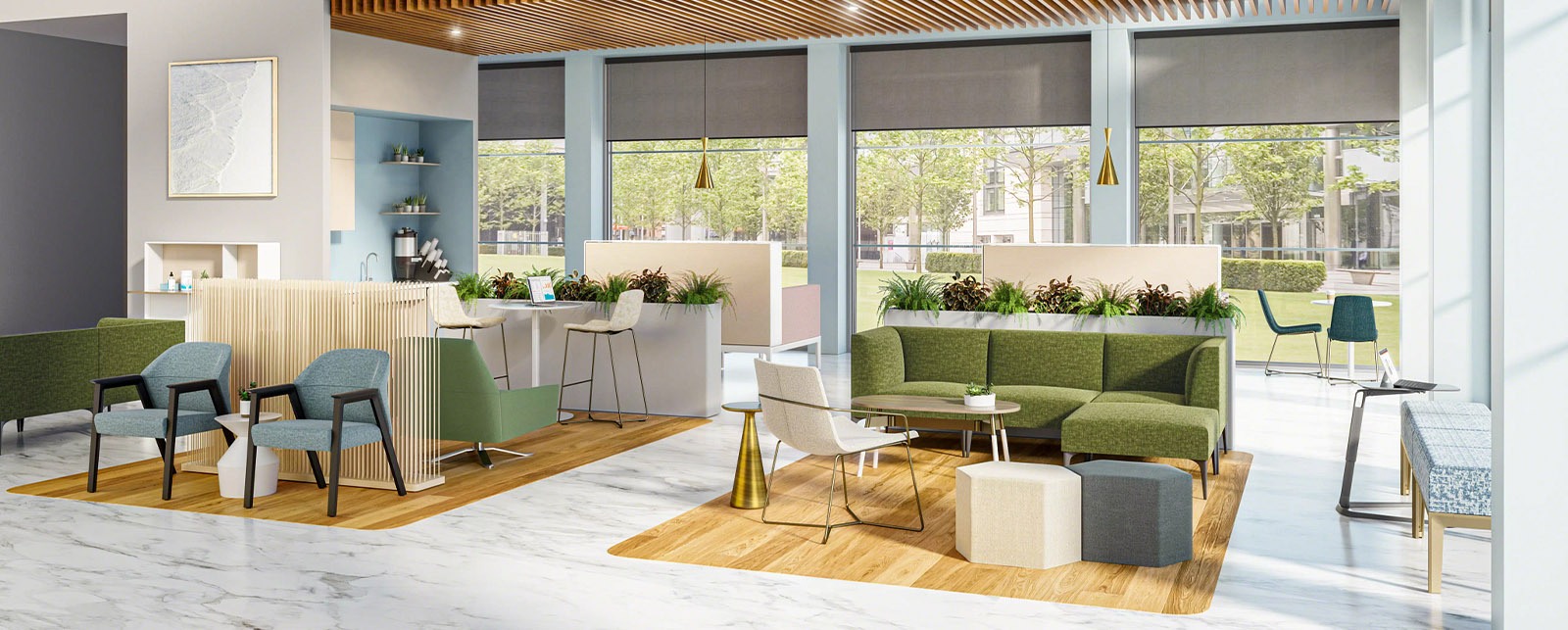

Ancillary Furniture and the Impact on Patient Experience
Just the thought of going to the doctor’s office sparks our anxiety. Images of stark white settings, crinkly paper on the exam table, cold temperatures, being prodded start appearing in our minds as our heart rates increase. A doctor’s visit does not have to invoke anxiety, be stressful or make a person feel unwelcome. Evidence-based design tells us when healthcare facilities create warm, welcoming environments reminiscent of home, patients can relax, communicate more effectively, and are more likely to have a positive experience.
A person interacts with a healthcare facility in many ways, but ancillary furniture is one of the most personal and powerful. The places where people spend most of their time in healthcare environments are transition spaces, such as waiting rooms, lobbies, and cafeterias, and that’s primarily where they'll encounter ancillary furniture.
What is Ancillary Furniture in a healthcare environment you ask? This refers to all the furniture that supports seating and tables that offer the user a range of postures from seated, counter, to bar heights. It’s the furniture that provides patients and care providers choice and control in their interaction with the space. And it is a key design component in creating positive experiences for people.
When planning for ancillary furniture in healthcare settings, there are many features to consider. Historically, infection control and physical safety were the top priorities in designing healthcare furniture. Infection control is affected by the fabrics and finishes selected, and by the actual construction of the furniture. The fabrics and finishes should be able to endure rigorous cleaning without wrinkling, puddling, fading, discoloration, or wood elements turning gummy. Crumb sweeps or wipeout features allow furniture to be easily cleaned by maintenance staff to prevent bacteria and other microbes from accumulating.
In addition to safety through cleanliness, there is also a focus on how the human body interacts with the furniture. Providing arms for those who may need help getting up, open leg space between the floor and seat to allow the body to support itself while standing up, and attention to a wide range of weight requirements should be considered. While these requirements are non-negotiable, they don’t demand environments to be bleak or sterile. Although an all-white room with wipeable surfaces may be easy to clean, the “sterile” look might have adverse effects on people such as increased stress, anxiety, and even elevated blood pressure.
Can the dread of going to the doctor change to a more pleasant, meaningful, and positive experience with changes to space design? We say yes. And there are a few growing movements within the healthcare industry; Universal Design, Well-Being, and Therapeutic Environments which are focused on this shift towards creating environments where every person can choose and control their experience of the space, how they sit, perch, or lounge with positive distractions and ultimately feel more welcome. Using residential furniture in health care settings might support this change, though some of the barriers for use in healthcare settings are mentioned above. However, there are some furniture manufacturers already beginning to re-engineer residential lines to meet these criteria, and one brand that’s taken on this challenge is West Elm.
The re-launch of West Elm’s existing commercial grade line focuses on bringing the West Elm aesthetic to the healthcare world, while also integrating appropriate modifications for healthcare environments. The Slope Chair, Sterling Chair, Mesa Modular Sofa, and Lucas Lounge were reengineered to feature higher weight capacity, crumb sweeps, reduction of seams for cleanability, new materiality and postures. The West Elm Sterling chair for example, now has a 300lb weight limit, added crumb sweep, metal guest legs, decreased recline and can be specified in Designtex bleach cleanable fabrics.
Ancillary furniture has the power to transform environments to places where people feel thought of, included, and empowered. We think it may even assist in turning the dread of a doctor’s visit to a more positive experience and we'd love to show you more examples.